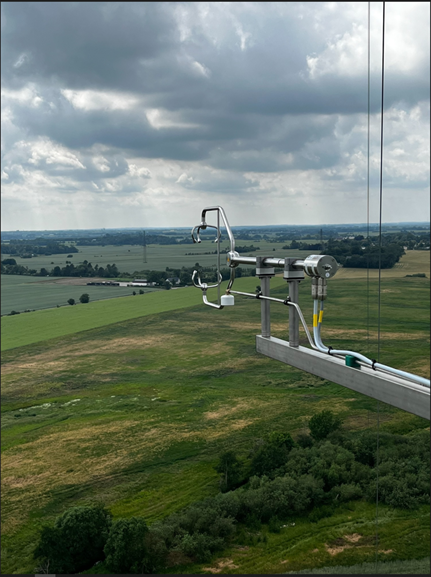greenhouse gas observation system for denmark

Development of a Greenhouse Gas Observation System for Denmark based on atmospheric measurements to document the effects of the Green Transition in Denmark.
Why do we need a Greenhouse Gas observation system for the Green Transition of Denmark?
[i] Nielsen et al. (2022). Denmark's National Inventory Report 2022
What does the system look like?

DTU sustain has started to develop a platform to measure the greenhouse gas (GHG) exchange between a landscape and the atmosphere. We started measuring CO2, CH4, and N2O and CO fluxes at a tall tower (~100 m) West of Copenhagen (Hove, CIBICOM) in November 2023 and will run the system for one year. Later the system will be installed in a suburb of Copenhagen (Gladsaxe, CIBICOM). Apart from measuring the GHG exchange and identifying known and hence unknown fluxes, we examine the uncertainty of the measurements and the possibility to partition the measured fluxes into maps of sources and sinks within the footprint of the tower. Another question is, as to how far we are able to partition the CO2 exchange into its biogenic and anthropogenic, i.e. fossil, components. The chosen locations represent two contrasting Danish situations. If we can successfully estimate the fluxes at these sites the system can be multiplied and form a network of representative GHG measurements in Denmark.
The project is funded by the Danish national research council (DFF) under the program of research for the Green Transition of Denmark.
CIBICOM sponsors the project and provides the physical platforms


Contact
Andreas Ibrom Associate Professor Department of Environmental and Resource Engineering anib@dtu.dk